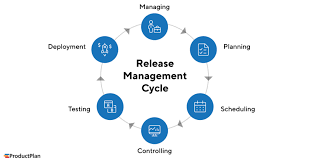Agile Engineering and Release Management: A Comprehensive Guide

About Course
In today’s fast-paced digital world, the ability to build and deliver high-quality software rapidly and reliably is no longer optional—it’s essential. Agile Engineering and Release Management equips you with the skills and frameworks needed to thrive in a dynamic software development environment. From mastering Agile principles to implementing continuous integration, deployment, and feedback loops, this course serves as a comprehensive guide for navigating the challenges of modern software engineering.
Through real-world case studies, hands-on strategies, and actionable insights, you’ll learn how engineering teams and release managers coordinate seamlessly to deliver customer value in short iterations. Whether you’re scaling Agile across a large organization or applying Agile principles to non-software domains like hardware, marketing, or education, this course offers a future-proof foundation to lead transformation initiatives effectively. If you’re ready to unlock the full potential of Agile and drive continuous improvement in your team or organization, this course is your roadmap to success.
Course Content
Introduction
Understanding Agile Engineering and Release Management
00:00The Importance of Agile in Modern Software Development
00:00Overview of Release Management and its Role in Agile Projects
00:00